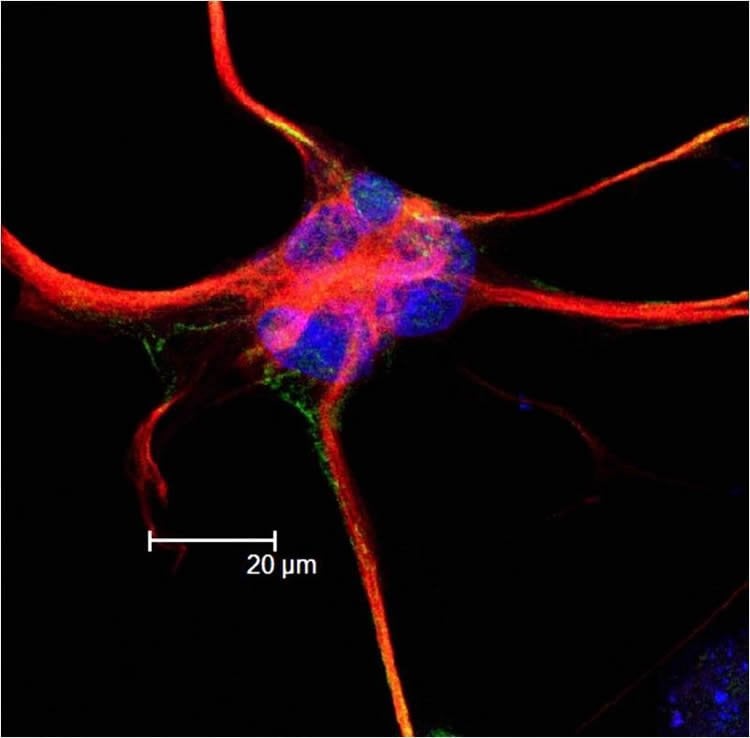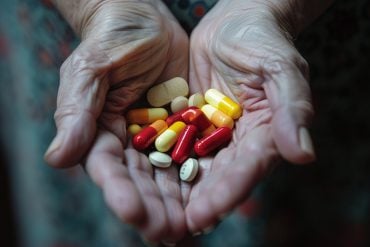Brain cells called astrocytes make key contribution, phase 3 trial of urate-boosting treatment to get underway in 2016.
A study from members of the research team investigating whether increasing blood levels of the antioxidant urate can slow the progression of Parkinson’s disease has found that the neuroprotective effects of urate extend beyond its own antioxidant properties. In their paper receiving online publication in the journal Neurobiology of Disease, the Massachusetts General Hospital (MGH) investigators report that urate also stimulates brain cells called astrocytes to activate a major antioxidant pathway believed to have a role in several neurodegenerative disorders. A National Institute of Neurological Disorders and Stroke (NINDS)-funded phase 3 trial of a urate-elevating drug, led by the senior author of the current study, will begin enrolling patients next year.
“While the antioxidant properties of urate are well-established, several other direct antioxidant treatments like vitamin E have failed to show disease-modifying benefits in clinical trials for Parkinson’s disease,” says Michael Schwarzschild, MD, PhD, MassGeneral Institute of Neurodegenerative Disease, senior author of the current paper and principal investigator of the urate clinical trials. “This new evidence of a more nuanced molecular mechanism for urate-induced neuroprotection boosts our enthusiasm that this will be a truly novel strategy and not ‘just another direct antioxidant’ that will fail to protect the brain cells that degenerate in Parkinson’s.”
Based on epidemiologic studies indicating that people with naturally higher levels of urate have a reduced risk of developing Parkinson’s disease, Schwarzschild and colleagues at MGH and elsewhere previously showed that the disease appears to progress more slowly in patients with higher urate levels. While their studies also found urate elevation to be protective in cellular and animal models of Parkinson’s, other evidence – including a 2012 study by the MGH team – implied that protection was limited without the presence of star-shaped brain cells called astrocytes. The current study was designed to determine the nature of astrocytes’ contribution to urate-induced neuroprotection.
A series of experiments in cultured cells confirmed that urate-treated astrocytes could protect dopamine-releasing cells similar to those that are damaged in Parkinson’s from oxidative damage. Analysis of fluid around those astrocytes revealed high levels of another antioxidant called glutathione, which is part of a pathway controlled by a protein called Nrf2, defects in which have been implicated in several neurodegenerative diseases. After confirming that urate application did significantly increase astrocytes’ release of glutathione and activation of the Nrf2 pathway, the researchers also showed that the neuroprotective property of fluid surrounding the cells was significantly reduced if glutathione was removed. An important next step, Schwarzschild notes, will be confirming that Nrf2 activation in astrocytes is an essential part of urate’s protective effects in an animal model of Parkinson’s disease.
The phase 3 trial of the nutritional supplement inosine, which is converted to urate in the body, is a follow-up to the phase 2 trial, led by Schwarzschild and colleagues at the Harvard School of Public Health and the University of Rochester Medical Center. Published in 2013 and supported by the Michael J. Fox Foundation for Parkinson’s Research, that two-year trial confirmed that the studied dosages successfully raised urate levels in 74 recently diagnosed Parkinson’s patients without producing serious side effects.

SURE-PD3 (Study of Urate Elevation in Parkinson’s Disease, phase 3) – planned to enroll 270 patients with early-stage Parkinson’s – will investigate whether moderate urate elevation resulting from two years of inosine treatment slows disease progression. The double-blinded, placebo-controlled trial will be conducted at 60 Parkinson Study Group sites across the U.S. – with the MGH acting as clinical coordinating center and the University of Rochester Medical Center as data coordinating center – and supported by up to $26 million from the NINDS. Additional funds from the Michael J. Fox Foundation will support clinical pharmacology studies designed to improve the safely of the phase 3 trial by investigating potential interactions between inosine and common foods or other medications that may be taken by participants.
“Reaching a phase 3 trial indicates that inosine is among a small set of therapeutic candidates for Parkinson’s that have shown enough promise in previous studies – as well as sufficient safety – to warrant the major investment required to test for efficacy,” says Schwarzschild, a professor of Neurology at Harvard Medical School. “We still face the major challenges of finding the right patient volunteers and rigorously conducting the trial, since clearly demonstrating the effectiveness of inosine against disease progression is required before we could conclude that its promise has been realized. In the meantime, we need to keep cautioning patients and caregivers against using inosine outside of carefully designed trials, since excess urate can cause kidney stones or gout.”
Information for potential participants in the phase 3 trial – individuals with early-stage Parkinson’s who do not yet require drug treatment – will be available early next year at ClinicalTrials.gov and FoxTrialFinder.org.
Rachit Bakshi, PhD, MassGeneral Institute of Neurodegenerative Disease (MGH-MIND), is lead and corresponding author of the Neurobiology of Disease paper. Additional co-authors are Hong Zhang, Robert Logan, Yuehang Xu, and Xiqun Chen, MD, MGH-MIND; and Ila Joshi, PhD, MGH Dermatology.
Funding: The study was supported by Department of Defense grant W81XWH-11-1-0150, and National Institutes of Health grants K24-NS060991 and R21-NS084710.
Source: Terri Ogan – Mass General
Image Source: The image is credited to Nathan S. Ivey and is licensed CC BY 3.0
Original Research: The study will appear in Neurobiology of Disease.






